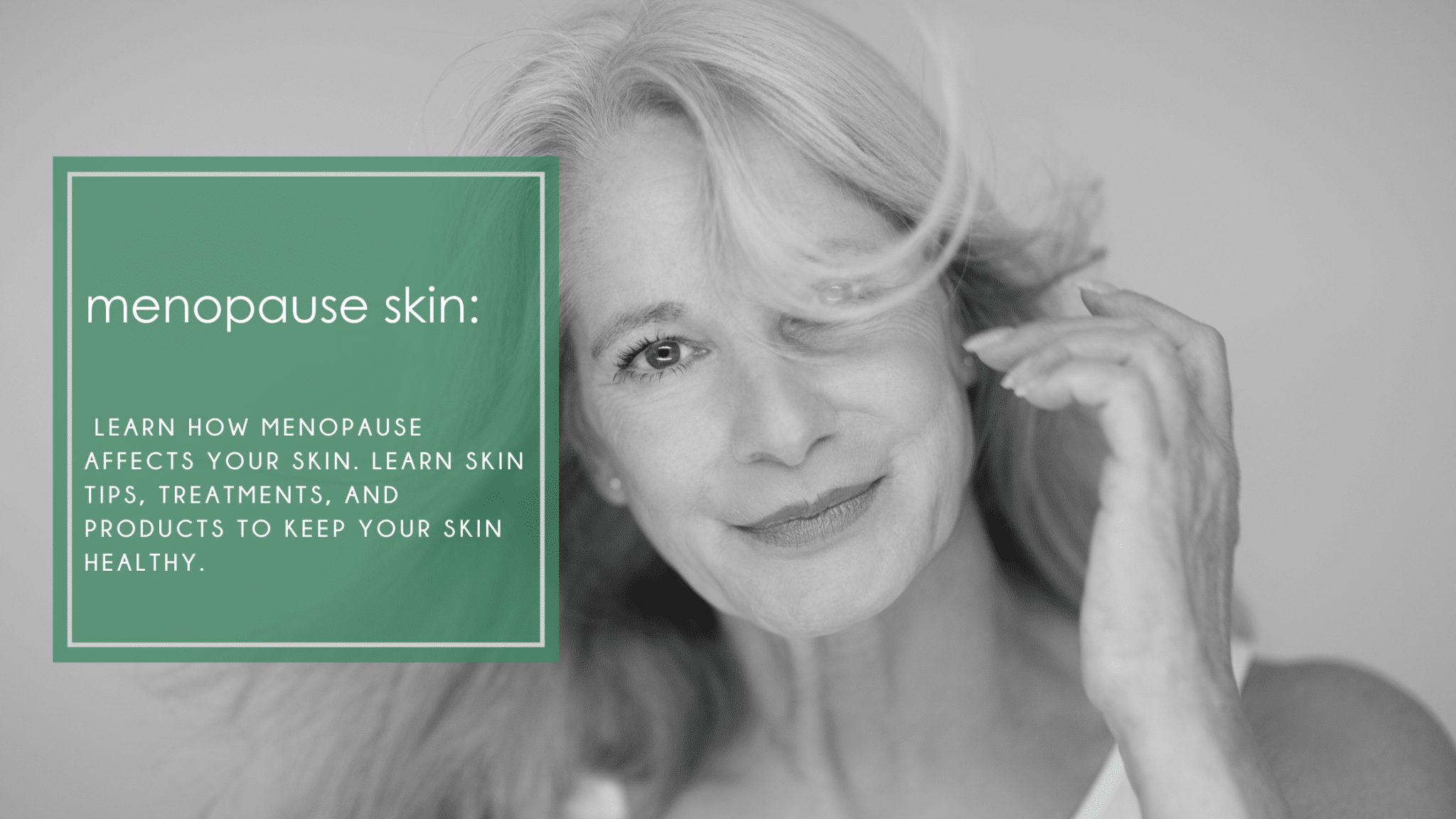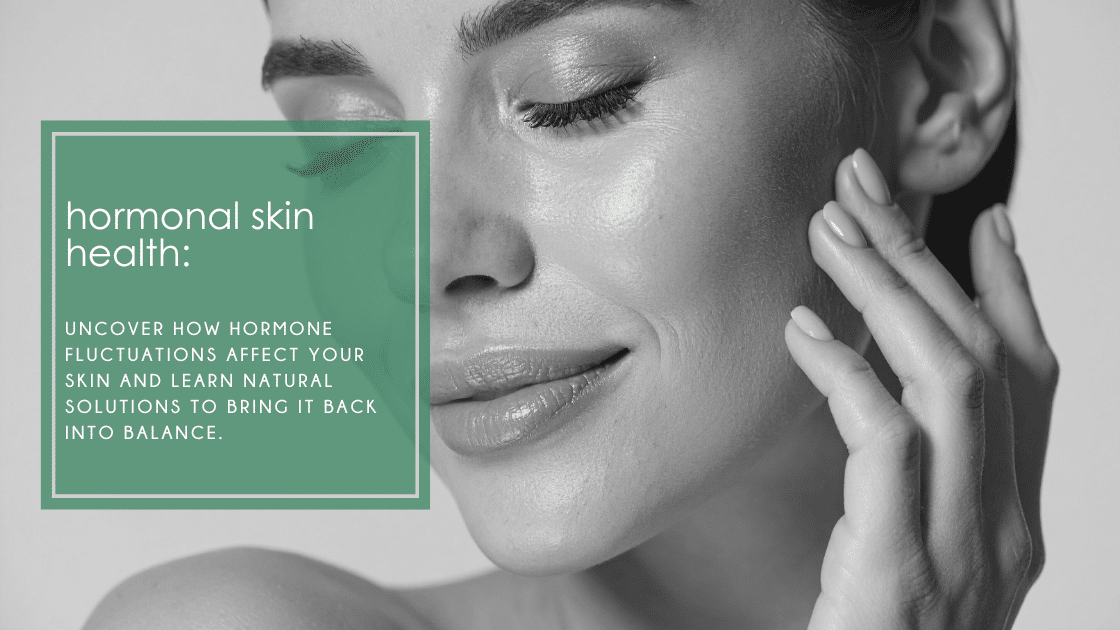Menopause: Your Ultimate Skin Guide
Menopause: Why your skin feels different after 40
Menopause is the natural biological occurrence that ends a woman’s reproductive life. Aside from the emotional and physical changes that occur, this is when women notice a change in their skin. Today, we are going to talk about how the skin changes, why the skin changes, and how to care for your skin before and after menopause. Let’s dig in!
Perimenopause vs. Menopause
Let’s define these two, because many confuse the symptoms of perimenopause and menopause.
Perimenopause is the transitional period before menopause that can last from a few months up to 10 years. Perimenopause ends when a woman has not had her period for a consecutive 12 months, which is when menopause begins.
Menopause is the period when menstruation completely stops, due to a decline in estrogen and progesterone levels.
What Happens to Your Skin During Perimenopause
During perimenopause, women begin to notice changes in the way their skin looks, acts, and responds. Some typical changes are dry skin, acne, wrinkles, sagging skin, hyperpigmentation, increased sensitivity, and thinning skin.
Acne During Perimenopause
In this transition period, many women may develop painful acne, mainly in the jaw and mouth areas. This is caused by an imbalance of the hormones, androgens increasing and estrogens decreasing. According to PubMed, “In menopausal women, mechanisms that lead to new onset or recurrence of acne are unclear; however, hormonal factors, specifically androgens, play a major role. This hormonal imbalance between estrogen and androgen further increases due to decrease in sex hormone-binding globulin (SHBG) levels and is called postmenopausal hyperandrogenism which can lead to acne flare.”
What Happens to Your Skin In Menopause
Menopause affects both the functionality and structure of the skin, such as dry skin, collagen loss, thinning of the skin, lack of elasticity, wrinkles, and hyperpigmentation. The primary reason is that once estrogen & progesterone decline, collagen loss increases. According to PubMed, “A rapid decline in skin collagen is seen following menopause, with nearly a third lost in the first 5 years and a decline of 2.1% per year over the 15 years following menopause.” Another common skin concern is the increase in redness or flushing in the skin. This is due to the thinning of the skin, making the capillaries more noticeable.
Will Menopause Cause Dry Skin?
Yes, estrogen is responsible for the skin’s hydration levels. Once estrogen levels decline, so does the skin’s ability to retain moisture. One way to combat this is to use hyaluronic acid twice daily, along with a ceramide-rich moisturizer.
Does Your Skin Age Faster?
Yes. Within the first 5 years of menopause, you lose 30% of collagen. After 5 years, you lose about 1-2% a year. The American Academy of Dermatology says, “As collagen diminishes, our skin loses its firmness and begins to sag. Jowls appear. Permanent lines run from the tip of the nose to the corners of the mouth. Wrinkles that used to appear only with a smile or frown become visible all the time.” The good news is that there are ways to slow this process down
Can You Rebuild Collagen After Menopause?
You can’t rebuild collagen; however, you can strengthen the collagen you do have. Skincare products like retinol, bakuchiol, or peptides stimulate fibroblast cells and help maintain the skin’s structure. Facial treatments such as microcurrent and microneedling with exosomes also help strengthen collagen and can be done regularly to keep the skin younger-looking.
What Does Menopause Skin Look Like?
Menopause skin appears thin, dry, shows deeper wrinkles, sagging skin, and has a lackluster appearance. This is due to a lack of elasticity, which can be thought of as a rubber band that gets old and doesn’t bounce back as quickly. This is why our skin sags. PubMed states, “Elastin degeneration increases with menopause and manifests clinically as slack skin and increased wrinkling.”
What Causes Itchy Skin During Menopause?
Itchy skin is related to the loss of estrogen, causing the skin to become drier. This causes the itchy sensation on the skin. This decline also causes the skin to become sensitive, which means it can react to certain fabrics, ingredients, or other irritants, causing the skin to feel itchy. Lastly, medications can play a role in itchy skin as well as nerve damage.
How To Treat Menopause Skin?
We like to keep it simple to ensure your skin stays healthy and hydrated during menopause. The first thing is to avoid any harsh cleansers or exfoliants because these increase dryness by damaging the skin barrier. Try this instead…
Cleanser: Use a cream or oil cleanser twice daily
Exfoliation: Use a gentle gommage once a week to increase cell turnover
Serums: Use a hyaluronic serum twice a day. Retinol or Bakuchiol serum every night and a Peptide serum every morning. Vitamin C can be added to your morning routine because it’s an antioxidant, which means it fights oxidative stress as well as brightens dark spots
Moisturizer: Use a ceramide-rich moisturizer that holds water in the skin
Facial Oils: Face oils can increase hydration because they stimulate oil production. You can mix it with your moisturizer or apply it underneath your moisturizer
Protect: Always wear a zinc-based sunscreen to protect delicate skin from sun damage
Facial Treatments for Menopause Skin
Facial treatments are great for the health of menopause skin. Monthly facials will maintain a healthy skin barrier, minimize dryness, and increase cell turnover. More advanced treatments include:
Microcurrent: Uses electromagnetic current to tighten facial muscles, increase lymph, and stimulate collagen. This treatment can be done in a series to lift and tighten facial muscles, eventually going to monthly maintenance treatments to keep the skin healthy and younger-looking
Microneedling or Nanoneedling: Uses tiny needles to create microchannels in the skin to allow for exosomes or specialized serums to penetrate to the dermis, therefore strengthening collagen and elasticity. This treatment can be done monthly for 6 months, then follow up every 6 months for a treatment
Red Light Therapy: Uses red light to stimulate cellular energy, strengthen collagen, and increase wound repair. This treatment can be done weekly or added to your facial treatment
Ready to Get Started?
We would love to help you look and feel great during menopause. Please visit our website to book your first appointment today.
Got questions? Drop them in the comments below!!


